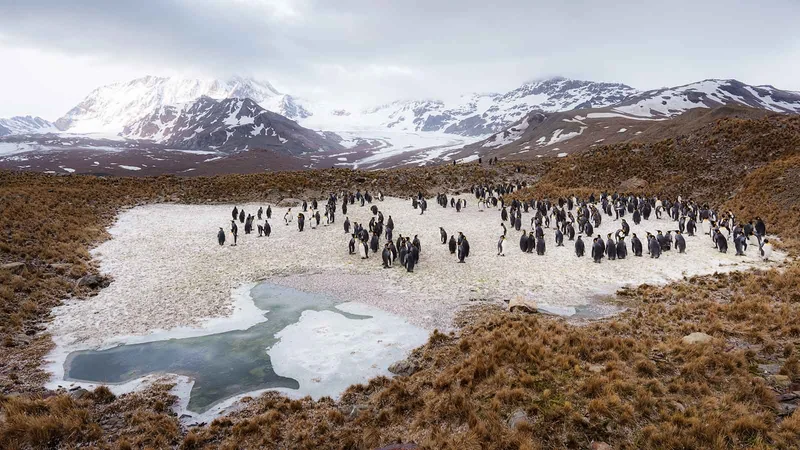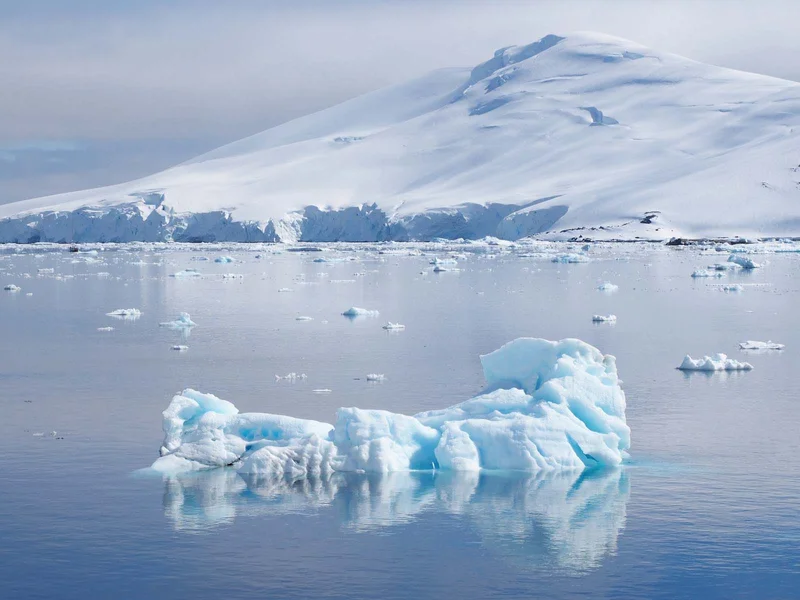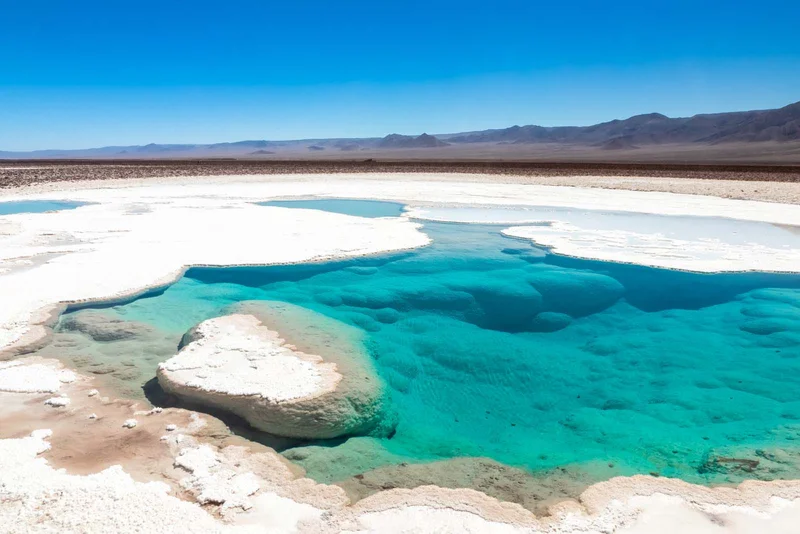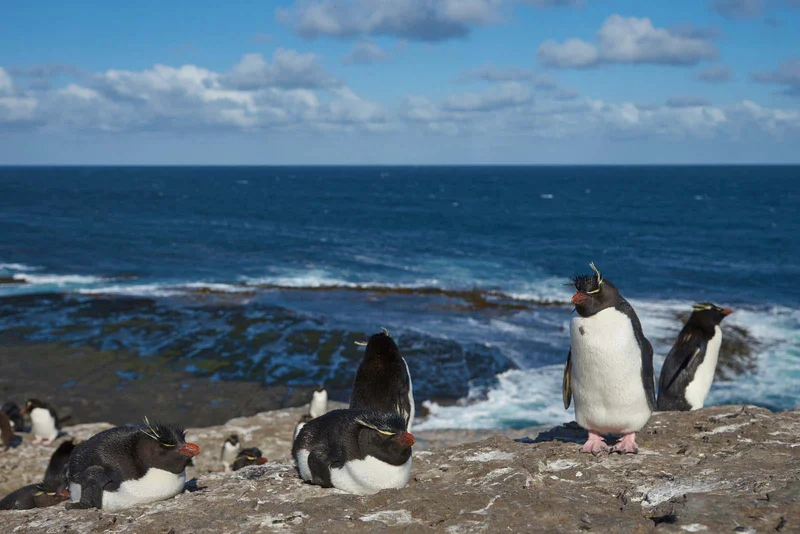
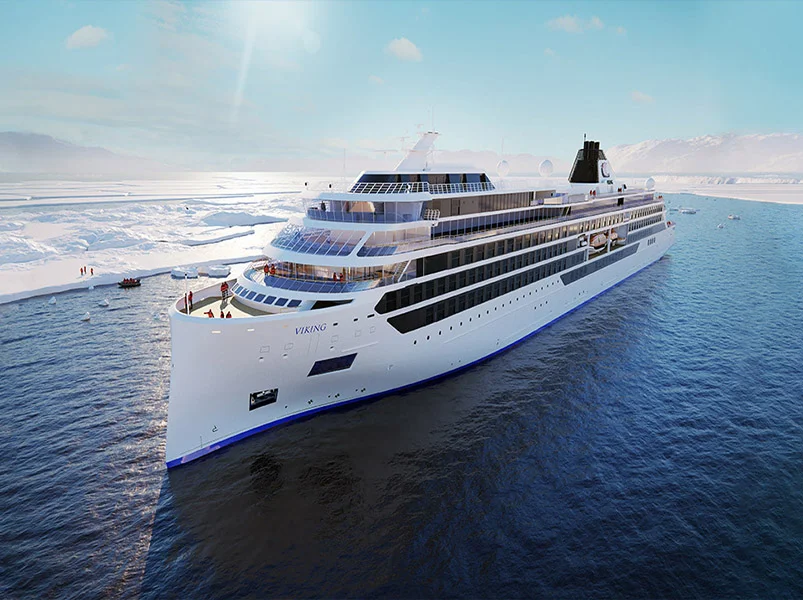
Antarctica to Inland Waterways
From the "End of the World," embark on an extraordinary voyage to discover Antarctica, making stops at isolated locations in the South Atlantic. Experience breathtaking sunsets in The Bahamas, sail through the Panama Canal, and marvel at the grand glaciers of Chile. Spend extra time exploring the remarkable wildlife of the Galápagos or dive into the captivating cultures of Peru and Rapa Nui, with optional land excursions and extension programs designed to inspire.
69 Day Antarctica Itinerary
Day 1: Buenos Aires, Argentina
Upon arrival, check in to your hotel and settle into the vibrant energy of Buenos Aires, Argentina’s cosmopolitan capital. This dynamic city blends Latin passion with European charm, reflected in its tree-lined avenues and postcolonial architecture influenced by Spanish, French, and Italian heritage. While its lively cafés, bodegas, and bustling nightlife are quintessentially Argentine, its diverse barrios (neighborhoods) create an inviting, intimate feel despite the city's vast size. The historic district of San Telmo, with its cobblestone streets and elegant Belle Époque buildings, exudes bohemian charm, where the haunting melodies of tango fill the air.
Day 2: Ushuaia, Argentina
After breakfast, check out of your hotel and board your charter flight to your embarkation city. Ushuaia, the world’s southernmost city, is nestled between the Beagle Channel and the rugged, snow-capped slopes of the Andes, giving it a remote, frontier-like atmosphere. The city is a hub for Antarctic explorers preparing for expeditions that set sail from its port. As the capital and gateway to the famed Tierra del Fuego—Spanish for "Land of Fire"—Ushuaia carries a name inspired by the perpetual fires once kept burning by the indigenous Yámana people for warmth. This largely untouched region includes the vast island of Tierra del Fuego along with numerous Chilean and Argentine islands scattered throughout its waters.
Day 3-4: Sail the Drake Passage
Named after the 16th-century English privateer Sir Francis Drake, the icy waters of the Drake Passage span approximately 600 miles between Cape Horn and Livingston Island in the South Shetland archipelago. As you journey across this legendary stretch, take advantage of your ship’s amenities—enjoy a refreshing stroll on the Promenade Deck or start your day with an energizing workout in the state-of-the-art Fitness Center.
Day 5-9: Explore Antarctica
Antarctica, both otherworldly and awe-inspiring, has captivated explorers and adventurers for generations. This frozen wilderness is a land of striking contrasts—serene bays dotted with glistening icebergs and towering, snow-covered mountains rising from rugged basalt cliffs. Its breathtaking scenery offers moments of peaceful solitude, as fur seals rest atop drifting ice sheets, and powerful spectacle, as glaciers dramatically calve into the sea. The nutrient-rich, frigid waters surrounding the continent are home to magnificent marine life, where humpback, fin, and immense blue whales often appear alongside expedition ships venturing into their remote domain.
Day 10: Sail the South Atlantic Ocean
Follow the path of the Mid-Atlantic Ridge, a vast underwater mountain range that surpasses the combined length of the Rockies, Himalayas, and Andes. These submerged peaks stretch from north to south, dividing the Atlantic Ocean. As you sail, indulge in a diverse selection of international cuisine aboard your ship. Savor global flavors at the World Café, dine under the open sky on the Aquavit Terrace, or enjoy regional specialties at The Restaurant.
Day 11-13: Explore South Georgia
South Georgia is a land of untamed beauty, characterized by its rugged terrain, towering mountains, and breathtaking glaciers. Discovered by Captain James Cook in 1775, it has long been a landmark on explorers’ maps. Sir Ernest Shackleton first navigated these waters in 1916 and returned in 1921 in an effort to chart the Antarctic coastline. Even today, South Georgia remains one of the most remote and least visited places on Earth. Though uninhabited by humans, it teems with wildlife, including king penguins, albatrosses, and both elephant and fur seals.
Day 14-15: Sail the South Atlantic Ocean
Journey in the footsteps of legendary explorers like Captain James Cook, who sailed these waters and claimed South Georgia for Britain in 1775. Connect with fellow travelers in the inviting ambiance of the Living Room, where the gentle strains of classical music create the perfect atmosphere for relaxation. Savor a freshly brewed coffee or unwind with a refreshing cocktail as you take in the surroundings.
Day 16: Port Stanley, Falkland Islands
The Falkland Islands, a British Overseas Territory, consist of nearly 800 remote islands. On East Falkland, the main island, visitors—including curious travelers and expedition ship crews bound for Antarctica—can experience British hospitality in Port Stanley’s cozy pubs and admire the charming Victorian stone church. Despite having approximately 200 sheep for every resident, the archipelago is also renowned for its rich biodiversity. Five species of penguins inhabit these rugged shores, from majestic king penguins to playful gentoos and elusive Magellanic penguins along the outer coasts.
Day 17: West Point Island, Falkland Islands
West Point Island is home to some of the most breathtaking coastal scenery, where towering cliffs plunge into the ocean below. Originally established as a sheep farm in 1879 by Arthur Felton, the island remains in the family, now owned by his great-nephew Roddy Napier and his wife, Lily, who manage the farm and warmly welcome visitors. Recognized by BirdLife International as an Important Bird and Biodiversity Area, West Point Island and its neighboring isles provide a vital habitat for diverse wildlife, including the Falkland steamer duck, black-browed albatross, southern rockhopper penguin, and Magellanic penguin.
Day 18: Sail the South Atlantic Ocean
Journey across the legendary waters of the South Atlantic Ocean, where the famed explorer Sir Ernest Shackleton led the ill-fated voyage of the Endurance, which met its tragic fate in Antarctic waters in 1915. During your voyage, immerse yourself in discovery with an engaging lecture or enjoy a film on our state-of-the-art 8K laser-projected panoramic screen in The Aula—one of the most advanced learning spaces at sea. This unique venue seamlessly blends indoor and outdoor experiences, featuring retractable floor-to-ceiling windows that open to breathtaking 270° views of the surrounding seascape.
Day 19: Ushuaia, Argentina
Known as the “city at the end of the world,” Ushuaia is one of the most stunning destinations on Earth, framed by towering Andean peaks, crystal-clear lakes, and lush boreal forests. Though more than 600 miles north of Antarctica, its bustling port serves as the closest gateway to the "Last Continent" and a key departure point for polar expeditions. The allure of Antarctica’s breathtaking scenery—vast ice plains, rugged mountain ranges, and diverse wildlife, including whales, seals, and multiple penguin species—draws adventurers from around the world.
Day 20: Scenic Sailing: Cape Horn
Standing at the meeting point of the Atlantic and Pacific Oceans, Cape Horn is a rugged landmark named after the Dutch city of Hoorn in the Netherlands. Part of the remote Hermite Islands archipelago, this windswept, treeless expanse is often regarded as the southernmost point of the continent. Towering over Hornos Island is a massive formation of Jurassic volcanic rock, giving the landscape a prehistoric feel. Near the shoreline, the island’s historic lighthouse has served as a guiding light for sailors since 1991, earning its place as the world’s southernmost traditional-style lighthouse.
Day 21: Garibaldi Fjord, Chile
The crystal-clear waters of the Garibaldi Fjord wind through Chile’s Alberto de Agostini National Park, where the Andes dramatically descend into the sea. Recognized as a UNESCO Biosphere Reserve, this breathtaking region is a sanctuary for diverse wildlife. Towering valley walls draped in ice frame the landscape, while floating icebergs drift alongside seals and sea lions. At the heart of this spectacle lies the Garibaldi Glacier, a vast and ever-retreating expanse spanning 12 square miles, its immense presence dwarfing any vessel that ventures near.
Day 22: Explore Chilean Glaciers
Straddling the border between Chile and Argentina, the Southern Patagonian Ice Field extends over 200 miles along the rugged Andes Mountains. Chile alone contains nearly 80% of South America’s glaciers, covering approximately 7,700 square miles. These vast ice formations serve as vital freshwater reservoirs, supporting the diverse ecosystems and wildlife that thrive throughout the Patagonian landscape.
Day 23: Punta Arenas, Chile
Established as a Chilean penal colony in 1848, Punta Arenas is set against the breathtaking mountain landscapes of the Brunswick Peninsula’s eastern shores. Once a key stop for mariners navigating the continent by sea, the city later attracted European settlers drawn by newly discovered gold and the opportunity to establish extensive sheep farms. Over the years, Punta Arenas grew into one of Chile’s most significant ports, serving as a crucial hub for transcontinental shipping before the opening of the Panama Canal.
Day 24: Scenic Sailing: Chilean Fjords
A breathtaking wilderness of towering peaks, verdant islands brimming with wildlife, and a network of glaciers and rivers cascading into glistening waters, Chile’s fjords are among the most remote and untamed landscapes on Earth. These pristine waterways wind through immense ice fields, dramatic mountain slopes, and peaceful fishing villages nestled along tranquil shores, framed by lush, forested hills.
Day 24-26: Explore Chilean Glaciers
During the last Ice Age, the immense Patagonian Ice Sheet blanketed southern Chile in a thick layer of ice and snow. Around 12,000 years ago, rising temperatures triggered its gradual retreat, sculpting the dramatic Patagonian landscape. Today, only two massive remnants remain—the Northern and Southern Patagonian Ice Fields—spanning over 5,400 square miles, making them the third-largest frozen landmass on Earth. Along their edges, towering blue-hued glaciers continuously reshape themselves, calving massive icebergs that drift through the fjords and channels.
Day 27: Scenic Sailing: Chilean Fjords
Chile’s fjords and channels were originally home to indigenous peoples who crafted their canoes and dwellings from the native Pilgerodendron uviferum, a hardy conifer tree. In the mid-16th century, Spanish conquistadors began exploring the region, opting to navigate the fjords’ sheltered waterways to evade the rough seas and unpredictable weather of the Pacific Ocean. However, the harsh climate and dwindling local populations hindered colonial expansion, leaving the area sparsely inhabited—a reality that persists to this day.
Day 28: Puerto Chacabuco, Chile
Nestled in the heart of Patagonia, Puerto Chacabuco is a small yet significant gateway to the region’s breathtaking wilderness. Its name honors the 1817 Battle of Chacabuco, a crucial victory in Chile’s War of Independence led by national hero José de San Martín and the Army of the Andes against royalist forces. This remote landscape is defined by dramatic rocky peaks, deep-carved gorges, and glaciers of striking icy-blue hues that cascade into the sea. Towering pine-green forests cling to steep slopes, making this one of the most awe-inspiring and unspoiled destinations in the world.
Day 29: Scenic Sailing: Chilean Fjords
The stunning Chilean Fjords extend nearly 1,000 miles, from Cape Horn at the southernmost tip of South America to the Reloncaví Estuary near Puerto Montt. Shaped by retreating glaciers over the past 2.5 million years, this intricate network of channels and passages weaves through towering blue ice walls, dense forests, and dramatic mountain ranges. Along its rugged coastline, Magellanic penguin colonies and resting elephant seals thrive, while its waters serve as a seasonal haven for dolphins, migrating humpback whales, and hunting orcas.
Day 30: Sail the Pacific Ocean
Navigate the Mar Pacífico, or “peaceful sea,” a name given by Ferdinand Magellan nearly 500 years ago as he crossed these tranquil waters. While at sea, indulge in relaxation and renewal at our Scandinavian-inspired Spa, a Nordic retreat dedicated to holistic well-being. Whether you unwind in the Sauna, rejuvenate in the Snow Grotto, or immerse yourself in the soothing warmth of the Thermal Pool, you’ll emerge feeling refreshed and revitalized.
Day 31: Santiago (Valparaíso), Chile
Santiago, Chile’s vibrant capital, stands as one of the largest cities in the Americas, showcasing a rich blend of neoclassical, neo-Gothic, art deco, and other architectural styles spanning centuries. Serving as its gateway, Valparaíso is often likened to San Francisco due to its many cerros (hills). Once a thriving port city, Valparaíso's prominence declined after the opening of the Panama Canal. Today, its charming Victorian-era architecture reflects its 19th-century prosperity, with steeply sloped neighborhoods connected by ascensores (funiculars) and winding streets. From the hilltops, the panoramic views are simply breathtaking.
Day 32-33: Sail the Pacific Ocean
Cross the vast expanse of the Pacific Ocean, the world's largest, spanning nearly 64 million square miles—twice the size of the Atlantic and home to some of the planet’s most dramatic extremes. Take in the breathtaking views from the Finse Terrace, a distinctive outdoor lounge inspired by the renowned mountain plateau in south-central Norway. Unwind in ultimate comfort with heated couches and lava rock “firepits,” allowing you to embrace the beauty of the outdoors in any weather while admiring the stunning seascape or majestic coastal scenery.
Day 34: Iquique, Chile
Nestled between the Pacific Ocean and the Pampa del Tamarugal, a sprawling plateau in the Atacama Desert, Iquique is a dynamic city with a rich history. Once part of Peru, it flourished during the saltpeter mining boom before becoming part of Chile in 1883 following the War of the Pacific. Today, Iquique is home to a wealth of architectural gems surrounding Arturo Prat Square, including the grand Municipal Theater, the ornate Casino Español, and a striking Clock Tower blending Gothic and Moorish influences. The city's well-preserved Georgian-style homes stand as a charming reminder of its 19th-century prosperity.
Day 35-36: Sail the Pacific Ocean
Journey across the Pacific Ocean, a vast body of water that spans over 30% of the Earth's surface and connects the shores of Asia, Australia, North America, and South America. Enjoy a tranquil day at sea, taking in the breathtaking views from your stateroom veranda as you relax and unwind.
Day 37: Lima (Callao), Peru
Founded in 1535 by Francisco Pizarro as La Ciudad de los Reyes (“City of Kings”), Lima quickly became the capital of Spain’s Viceroyalty of Peru and home to the oldest university in the Americas, the National University of San Marcos. Today, it stands as one of South America’s most cosmopolitan cities, showcasing an impressive array of architectural styles, from early colonial and Spanish baroque to neoclassical and Art Nouveau. Its historic center, adorned with hundreds of balconies dating back to the viceroyalty era, is recognized as a UNESCO World Heritage Site.
Day 38-40: Sail the Pacific Ocean
Journey across the vast Pacific Ocean, home to over 75,000 volcanoes, many of which remain active beneath its depths. As you sail, indulge in a variety of exceptional dining experiences on board. Stop by Mamsen’s, a casual gourmet deli, available from morning until late at night, offering a taste of traditional Norwegian cuisine. Or, for a true Italian culinary experience, dine at Manfredi’s, where you can enjoy everything from Milanese risotto to Tuscan-inspired classics.
Day 41: Panama City (Fuerte Amador), Panama
Panama City is a striking metropolis on the Pacific coast, seamlessly blending modern skyscrapers with colonial charm. As Central America’s premier cosmopolitan hub, it stands as both a testament to global finance and a gateway to the region’s rich history. The historic Casco Viejo, perched on a scenic peninsula, is home to some of the nation’s most treasured landmarks, including ornate churches, grand palaces, and lively plazas. Just beyond the city, the iconic Panama Canal—one of the world’s greatest engineering marvels—stretches 48 miles, linking the Pacific to the Caribbean.
Day 42: Scenic Sailing: Panama Canal
The Panama Canal serves as a vital link between the Pacific and Atlantic Oceans, cutting across the narrowest part of the Isthmus of Panama. Spanning 48 miles, a full transit takes approximately eight to ten hours, navigating through Gatun Lake and the Culebra Cut, an artificial valley carved through the Continental Divide. A 20th-century engineering marvel, the canal utilizes a system of locks that raise and lower ships 85 feet above sea level, assisted by electric locomotives called mulas. Traversing the Panama Canal is both a remarkable feat and an unforgettable experience.
Day 43: Sail the Caribbean Sea
Navigate the sparkling turquoise waters that once inspired legends of daring pirates, adventurous swashbucklers, and buried treasures. As you sail, take full advantage of your ship’s amenities—breathe in the fresh sea air with a refreshing stroll along the Promenade Deck or start your morning with an invigorating workout in the state-of-the-art Fitness Center.
Day 44: Port Antonio, Jamaica
Port Antonio, the capital of Portland Parish, is a gateway to some of Jamaica’s most breathtaking natural wonders. Visitors can immerse themselves in the island’s lush rainforests or relax along its unspoiled beaches, including the idyllic Frenchman’s Cove Beach and San San Beach, both celebrated for their scenic beauty and tranquil ambiance. A visit to the famous Blue Lagoon offers a one-of-a-kind swimming experience, where a blend of warm and cool waters from an underground spring creates the perfect setting for a refreshing dip or a snorkeling adventure.
Day 45: Man of War Bay (Great Inagua), Bahamas
Man of War Bay lies within the tranquil expanse of Great Inagua Island, a largely untouched paradise. Its breathtaking scenery features crystal-clear turquoise waters gently caressing soft white-sand beaches, framed by verdant foliage and rugged landscapes. Encircled by mangroves and saltwater flats, the bay supports a rich and diverse ecosystem. Its pristine waters teem with vibrant coral reefs and tropical fish, while the surrounding wetlands provide a sanctuary for various bird species—most notably the striking pink flamingos that gather along the shores, adding to the bay’s picturesque beauty.
Day 46: San Salvador Island, Bahamas
San Salvador, a hidden treasure within the Bahamas archipelago, boasts both natural beauty and historical significance. Its powdery white-sand beaches and crystal-clear waters create a breathtakingly serene setting. The island’s rich marine ecosystem, featuring shallow coral reefs and mysterious blue holes, attracts divers and snorkelers, while its unspoiled landscapes, lush coastal areas, and peaceful cays offer a haven for nature lovers. According to historical records, San Salvador is believed to be the first landfall of Christopher Columbus in the Americas in 1492.
Day 47-49: Sail the Atlantic Ocean
Journey across the vast Atlantic Ocean, which is split from north to south by the Mid-Atlantic Ridge—an immense underwater mountain range that surpasses the combined length of the Rockies, Himalayas, and Andes. While at sea, indulge in a diverse selection of international cuisine on board. Savor global flavors at the World Café, enjoy open-air dining on the Aquavit Terrace, or experience regional specialties at The Restaurant.
Day 50: New York City, New York, United States
New York City is a captivating blend of energy and charm. From the bustling streets of Lower Manhattan’s financial district to the cozy, winding alleys of Greenwich Village, the city is alive with culture, world-class cuisine, and stunning architecture. There’s something for everyone—music enthusiasts can admire the acoustics of Carnegie Hall or enjoy a jazz and blues performance in Harlem. Romantics can take a scenic horse-drawn carriage ride through Central Park. Art aficionados can explore masterpieces at the Museum of Modern Art or the Guggenheim, while theater lovers experience the magic of Broadway, surrounded by the dazzling lights of Times Square.
Day 51: Sail the Atlantic Ocean
Journey across storied waters once thought by medieval Europeans to conceal mythical dragons beyond the horizon. While at sea, unwind in the Explorers’ Lounge, a space inspired by legendary voyages of discovery. Take in the breathtaking views through floor-to-ceiling panoramic windows as you enjoy a cocktail with friends or immerse yourself in a good book.
Day 52: Halifax, Nova Scotia, Canada
Halifax, with its distinct European charm, sits along the rugged Atlantic coastline. Those arriving by sea are welcomed by the historic Sambro Island Lighthouse, established in 1758 and recognized as North America’s oldest surviving beacon. In the harborside Historic Properties district, cobblestone streets are lined with elegant stone buildings dating back to the 18th and 19th centuries. The city’s heart lies around Citadel Hill, where Fort George once guarded the harbor. Today, both the fortress and the iconic Halifax Town Clock have been beautifully restored, preserving their rich history.
Day 53: Halifax, Nova Scotia, Canada
Halifax owes its existence to its deep, strategic harbor—one of the world’s deepest. Unlike many other coastal colonial towns, it was not built on fishing but rather established by the British in 1749 as a key naval stronghold. After the American Revolution, it became a critical military base for the British and later served as Canada’s primary wartime port during World War II, when an influx of military personnel and foreign nationals reshaped the city. Their stories live on at the Museum of Immigration at Pier 21, the very place where many first arrived in Halifax.
Day 54: Sydney, Nova Scotia, Canada
Sydney, the largest city on Cape Breton Island, sits along the southeastern stretch of Sydney Harbour at the mouth of its namesake river. Established in 1785 by the British and loyalists fleeing the United States after the American Revolution, it served as the island’s capital until 1820, when Cape Breton was incorporated into Nova Scotia. The area’s coal mines attracted waves of immigrants in the 19th century, and by the early 20th century, Sydney had risen to prominence as one of the world’s largest steel-producing centers. Today, it remains Nova Scotia’s second-largest industrial hub.
Day 55: Gros Morne National Park, Newfoundland and Labrador, Canada
Gros Morne National Park, a UNESCO World Heritage Site on Newfoundland’s west coast, spans nearly 700 square miles of breathtaking landscapes and diverse ecosystems. Its network of hiking trails winds through dramatic fjords, rugged mountains, dense forests, and coastal lowlands. The towering Gros Morne Mountain, rising 2,600 feet, dominates the skyline, while the stark terrain of the Tablelands showcases billion-year-old geological formations. The park is also a haven for wildlife, home to moose, caribou, and black bears.
Day 56: Havre-Saint-Pierre, Quebec, Canada
Havre-Saint-Pierre sits along the northern shore of the Gulf of St. Lawrence, just north of Anticosti Island. Originally settled in 1857 by fishermen from the Magdalen Islands, its residents, known as Cayens, take great pride in their Acadian heritage. Once reliant on fishing and lumber, the village now serves as a key transit port for ore transported from the Lac Allard mines. Surrounded by the striking landscapes of the Canadian Shield, the region is celebrated for its rich biodiversity and the enigmatic, weather-sculpted "monoliths" that dot its terrain.
Day 57: Tadoussac, Quebec, Canada
Tadoussac, a charming village in the Côte-Nord region, sits where the St. Lawrence River meets the Saguenay Fjord. Founded as a key trading post by French explorers in 1599, it has preserved its rustic appeal over the centuries. Surrounded by the striking landscapes of the fjord, Tadoussac is near several provincial and natural parks, including Canada’s first maritime national park. Its waters are a prime destination for whale watching, with a dozen species—such as minke, humpback, fin, and blue whales—visiting in the summer, while beluga whales can be spotted year-round.
Day 58: Quebec City, Quebec, Canada
Quebec City is often considered the most French-influenced city in New France. At the heart of its historic Old Town stands the grand Château Frontenac, reminiscent of the palatial estates of the Loire Valley. Its charming, French-accented streets wind past white-stone buildings that echo the character of medieval European villages. As the only walled city in North America outside of Mexico, Quebec City was fortified in the 17th century, shortly after its founding in 1608. Perched atop the rocky heights of Cape Diamond, its strategic location provided commanding views of the St. Lawrence River.
Day 59: Trois-Rivières, Quebec, Canada
Trois-Rivières serves as the cultural heart of Quebec’s Mauricie region. Founded in 1634, it was the second permanent settlement in New France, following Quebec City in 1608. Due to its strategic location, the city became a key hub for fur trade with First Nations peoples as explorers looked westward. Its name, meaning “Three Rivers” in English, reflects the way two islands in the Saint-Maurice River divide the waterway into three channels before merging with the St. Lawrence. Today, the city's historic core is adorned with stately century-old buildings that preserve its rich heritage.
Day 60: Scenic Sailing: St. Lawrence Seaway Locks
An extraordinary engineering achievement, the St. Lawrence Seaway is a network of locks, canals, and channels that enables ships and cargo to travel from the Atlantic Ocean through the St. Lawrence River to Lake Superior. Between Montreal and Lake Ontario, seven locks navigate around rapids and dams, while the 27-mile Welland Canal elevates vessels over the Niagara Escarpment to reach Lake Erie, bypassing Niagara Falls. Jointly managed by Canada and the United States, this vital waterway is often referred to as “Highway H2O” due to its crucial role in trade and transportation.
Day 61: Toronto, Ontario, Canada
Toronto is widely admired as one of Canada’s most dynamic and forward-thinking cities. Situated along the shores of Lake Ontario and overlooking the scenic Toronto Islands, it was established in 1793 by British loyalists seeking refuge after the American Revolution. Today, the city invites exploration on foot, from the charming Victorian bay-and-gable homes of Rosedale to the historic Wychwood Park, designated as an Ontario Heritage Conservation district. The Distillery District, a cultural hub, boasts North America’s largest preserved collection of Victorian industrial architecture.
Day 62: Toronto, Ontario, Canada
Toronto is a vibrant mosaic of cultures, each contributing unique traditions, customs, and flavors to this cosmopolitan city. With over half of its residents born outside Canada, its diverse neighborhoods reflect influences from around the world—Greektown, Little Italy, Koreatown, and Chinatown offer a true culinary and cultural experience. Among Toronto’s historic landmarks is St. Lawrence Market, which has been a cornerstone of the community since 1803. Today, its bustling stalls showcase everything from farm-fresh produce to antiques, making it a must-visit destination for locals and visitors alike.
Day 63: Welland Canal
The Welland Canal stands as one of Canada’s most remarkable 19th-century engineering achievements. Constructed between 1824 and 1833 to bypass the powerful Niagara River and its iconic falls, the canal features eight locks that raise or lower ships by a total of 326 feet between Lake Ontario and Lake Erie. Serving as a key artery for trade and industry on the peninsula, it accommodates numerous docking areas and roadway crossings. Viking’s newest expedition vessels are specifically designed to navigate this impressive waterway, ensuring safe and efficient passage through this crucial maritime route.
Day 64: Point Pelee, Ontario, Canada
Point Pelee is a stunning natural peninsula that extends into Lake Erie from Ontario, narrowing to a delicate tip before vanishing into the water. It is home to rich woodlands and the largest freshwater marshes in the Great Lakes region. Designated a national park in 1918, it is also safeguarded under the Ramsar Convention, an international treaty dedicated to wetland conservation. Situated at the crossroads of two major bird migration routes, the park has recorded around 350 bird species. Visitors can explore this remarkable ecosystem via scenic boardwalks, offering breathtaking views of open landscapes and gently lapping waves.
Day 65: Detroit, Michigan, United States
Detroit is located along one of the four vital straits connecting the Great Lakes to the St. Lawrence Seaway and has flourished as a city rich in culture and innovation. In 2015, it became the first U.S. city to receive UNESCO’s “City of Design” designation, recognizing its creative approach to urban development. Originally established as a fort in 1701, Detroit later became the heart of the American automobile industry. Today, it is celebrated as the birthplace of Motown—a fusion of “motor” and “town.” Its waterfront showcases an impressive mix of postmodern and art deco skyscrapers, reflecting its architectural legacy.
Day 66: Alpena, Michigan, United States
Alpena is located in the northeastern part of Michigan’s Lower Peninsula, overlooking Thunder Bay on Lake Huron. The town is home to the Alpena Light, a striking red steel lighthouse built in 1914. Established in 1840, the area initially relied on fishing and logging to support its economy, and it now hosts one of the world’s largest limestone quarries. Two of its notable architectural landmarks are listed on the National Register of Historic Places: the art deco County Courthouse and the late-Victorian IOOF Centennial Building, which once served as the city’s courthouse.
Day 67: Mackinac Island, Michigan, United States
Mackinac Island, nestled in the Straits of Mackinac where Michigan’s upper and lower peninsulas converge and where Lakes Huron and Michigan meet, is a charming treasure of the Great Lakes. This peaceful retreat retains the elegance of the Victorian era, with its car-free streets and horse-drawn carriages. The island’s perimeter road is the only state highway in the U.S. where motor vehicles are not allowed. Over 80% of Mackinac Island is designated as a state park, including notable landmarks like the Greek Revival Grand Hotel, the British-built Fort Mackinac, and its untouched wilderness areas.
Day 68: Milwaukee, Wisconsin, United States
Milwaukee was established by Europeans in 1818 when French-Canadian fur trader Solomon Juneau settled there. German, Polish, and Eastern European immigrants soon followed, bringing with them a rich beer brewing tradition. In the 20th century, Milwaukee became the leading beer producer globally. Today, the city thrives as a lively hub of art, history, and culture. The RiverWalk, a scenic pedestrian path along the Milwaukee River, is a favorite place for leisurely walks and enjoying public art displays.
Day 69: Milwaukee, Wisconsin, United States
Say goodbye to your fellow travelers and head home, or extend your adventure by joining one of theo additional excursions.
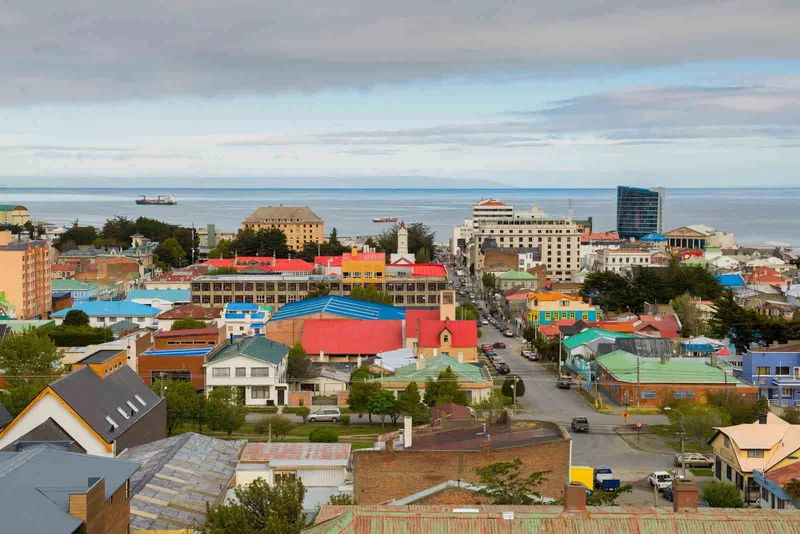
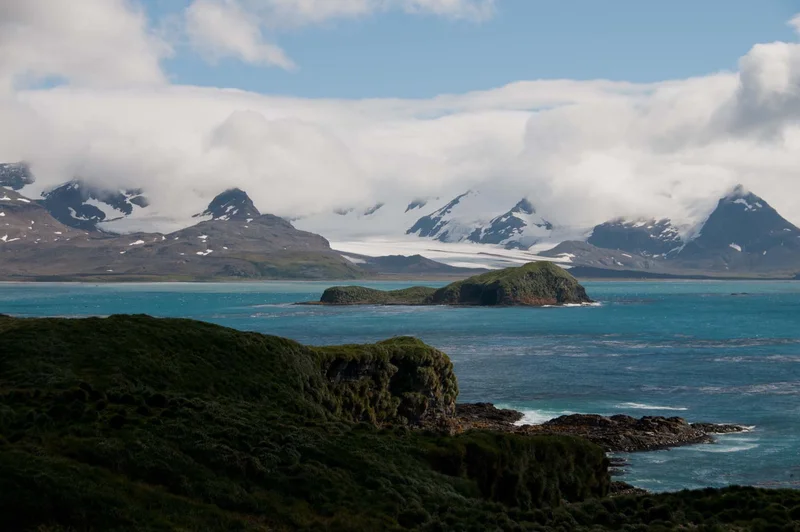
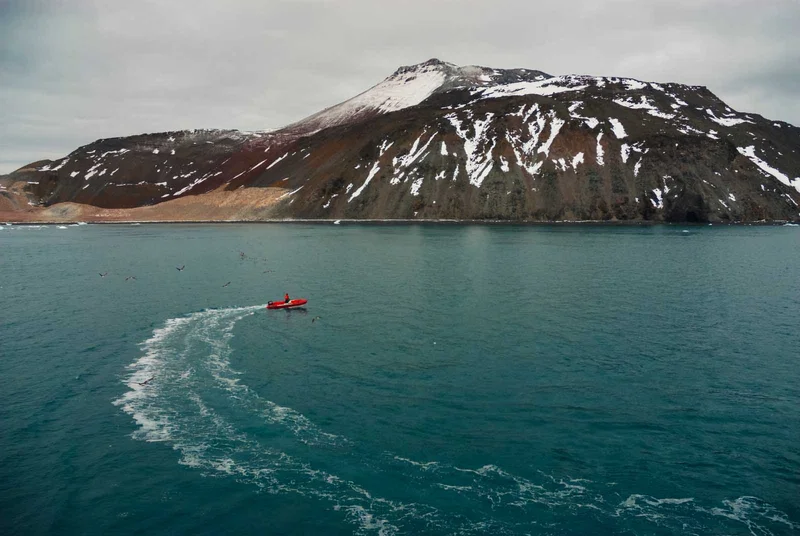
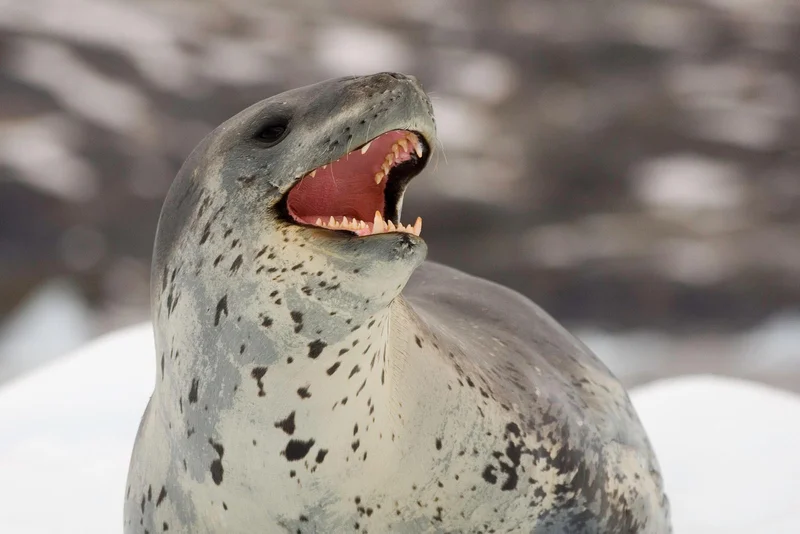
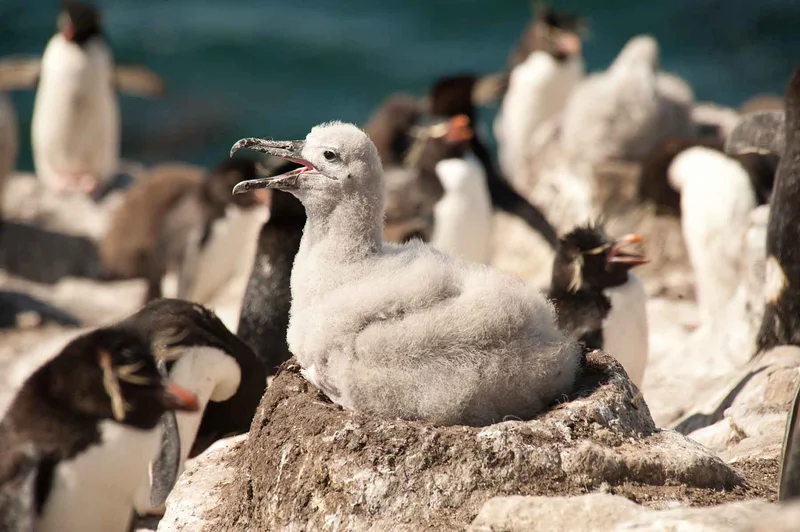
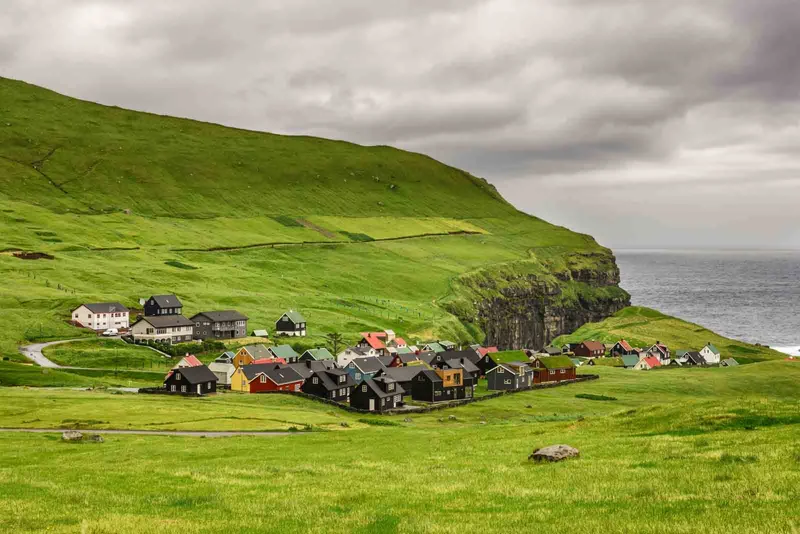
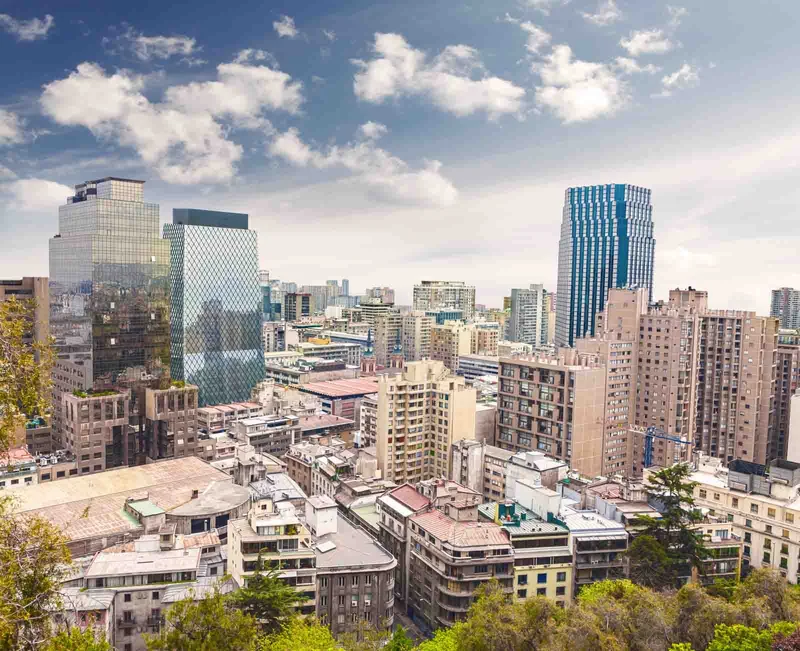
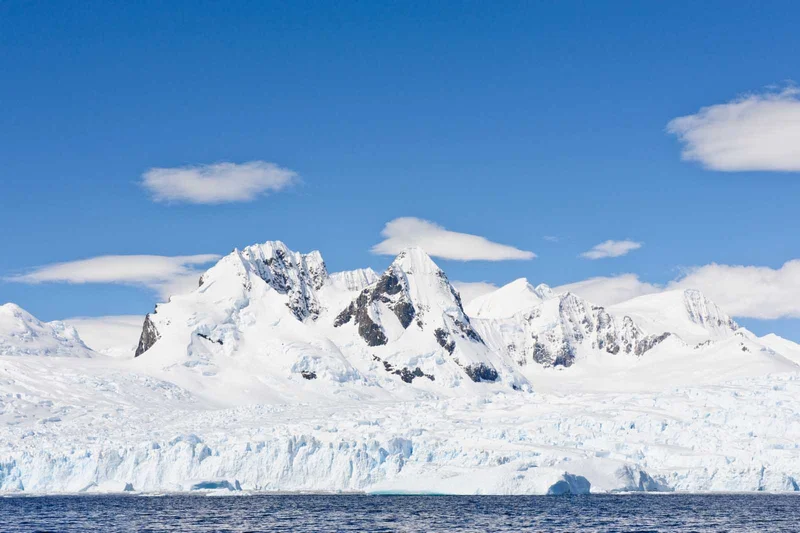
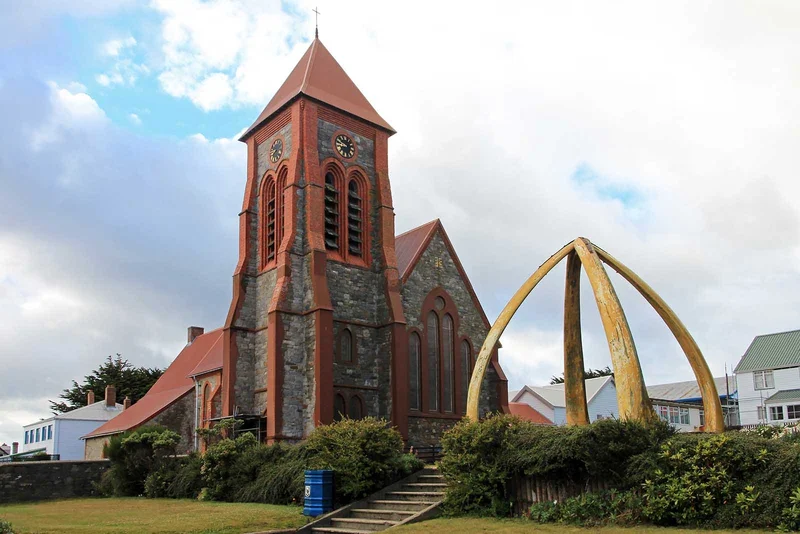
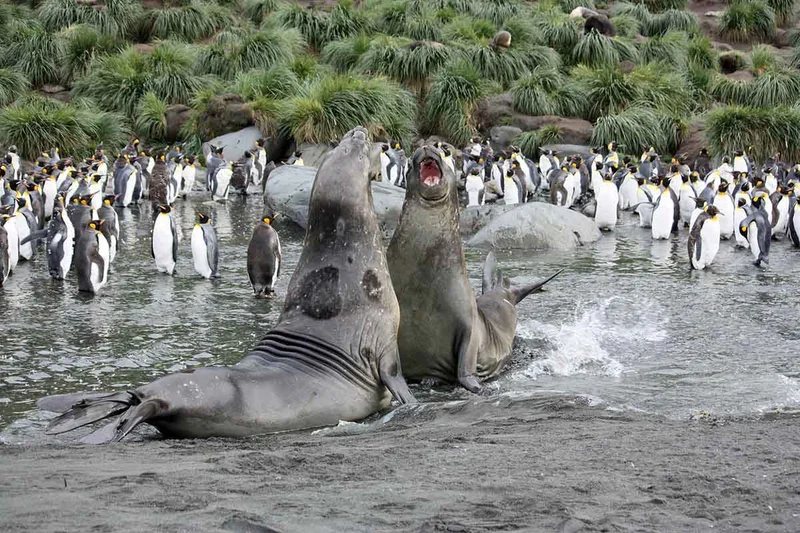
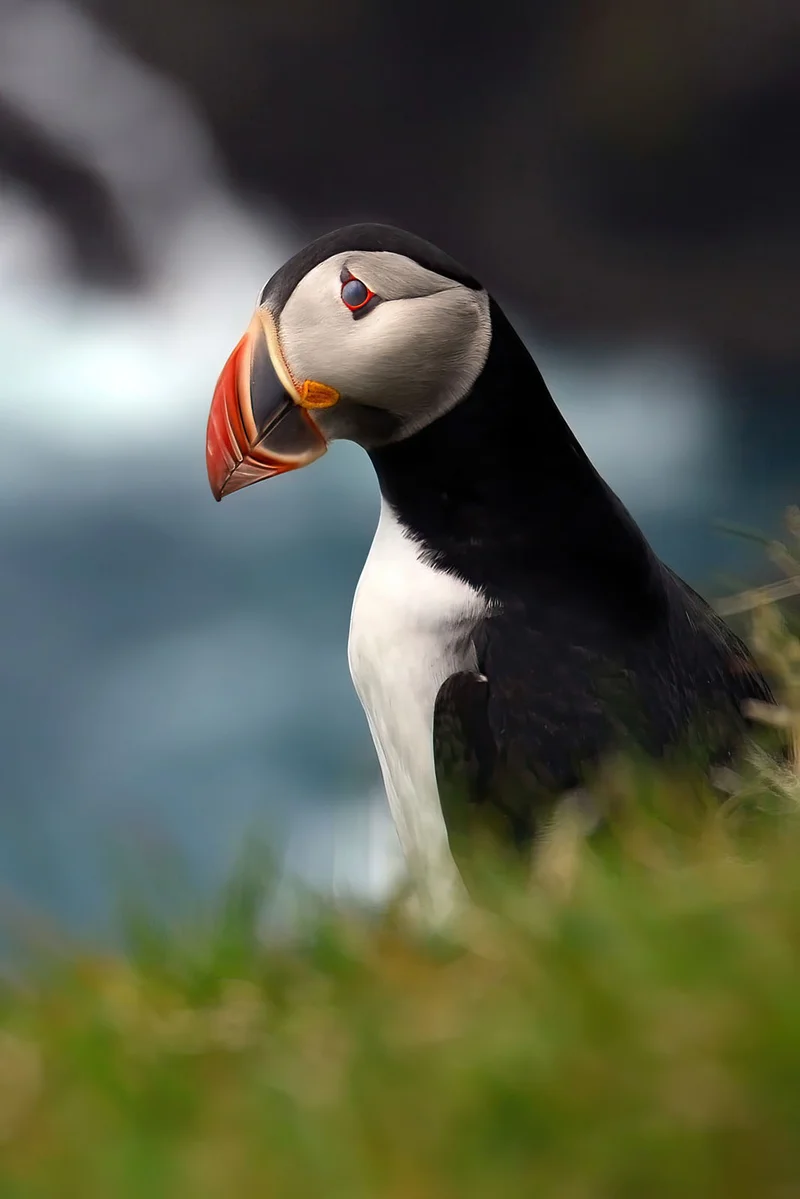
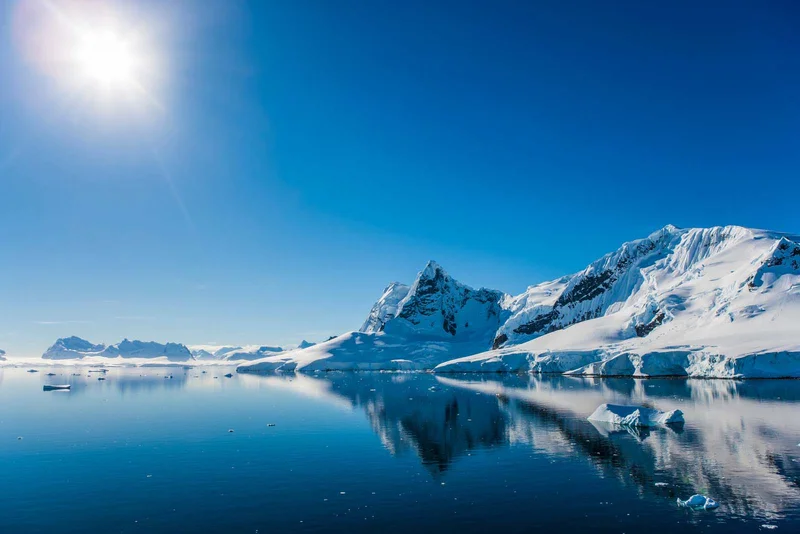
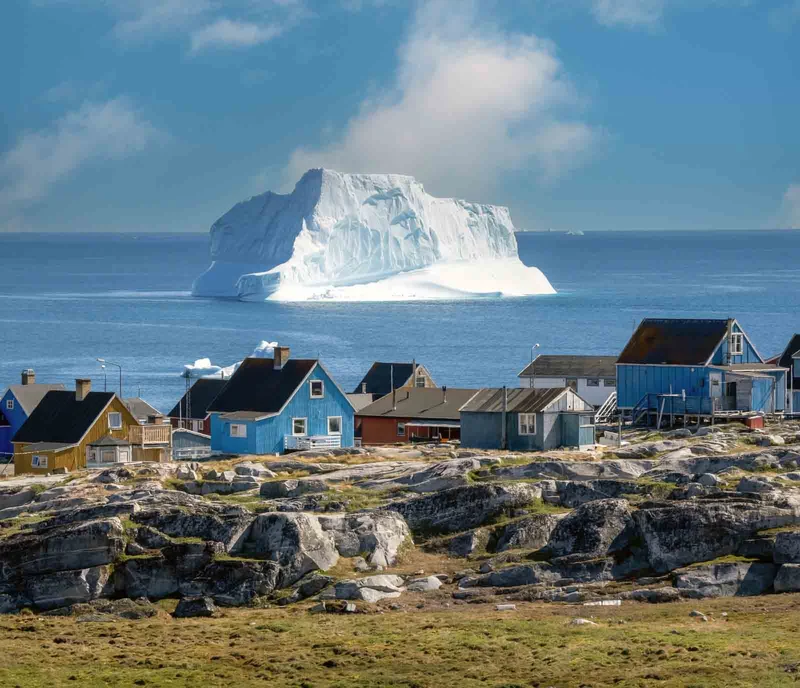
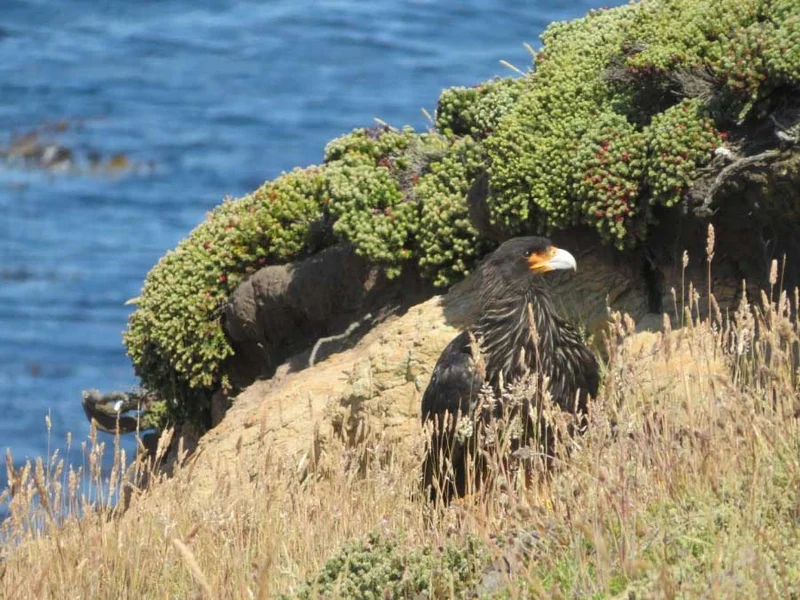
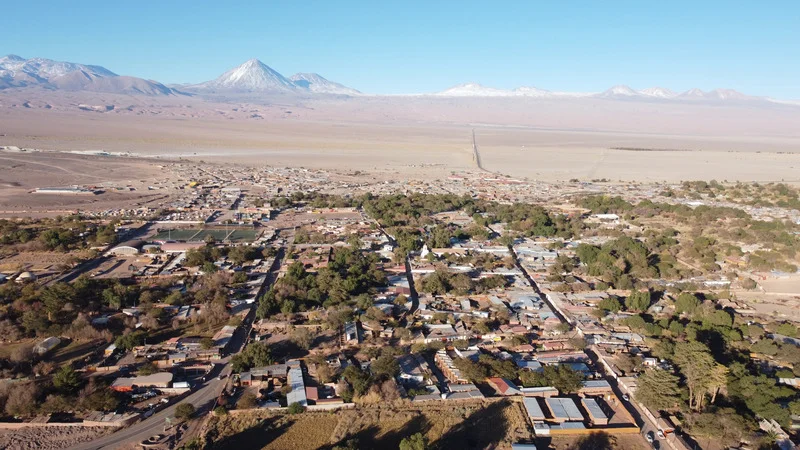
69 Day Antarctica Itinerary Highlights
- Discover the frozen beauty of Antarctica, with its unique landscapes and wildlife.
- Sail through one of the world’s most famous engineering marvels, the Panama Canal.
- Enjoy breathtaking sunsets in the tropical paradise of The Bahamas.
- Get up close with the extraordinary wildlife of the Galápagos Islands.
- Dive into the rich cultures of Peru and Rapa Nui, with optional land excursions.
Itinerary Map
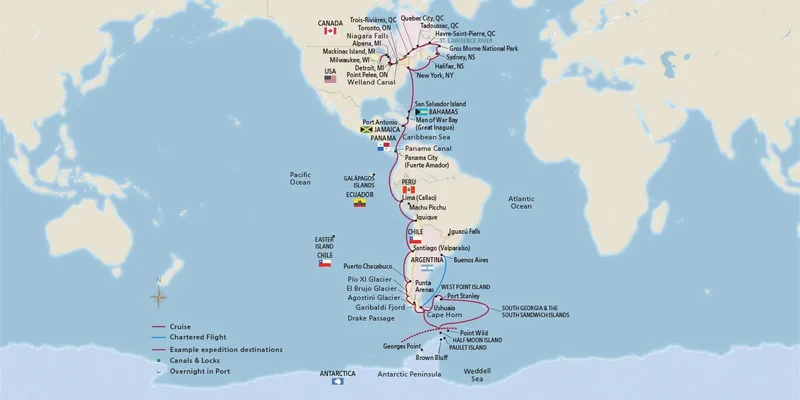
69 Day Antarctica cruise activities
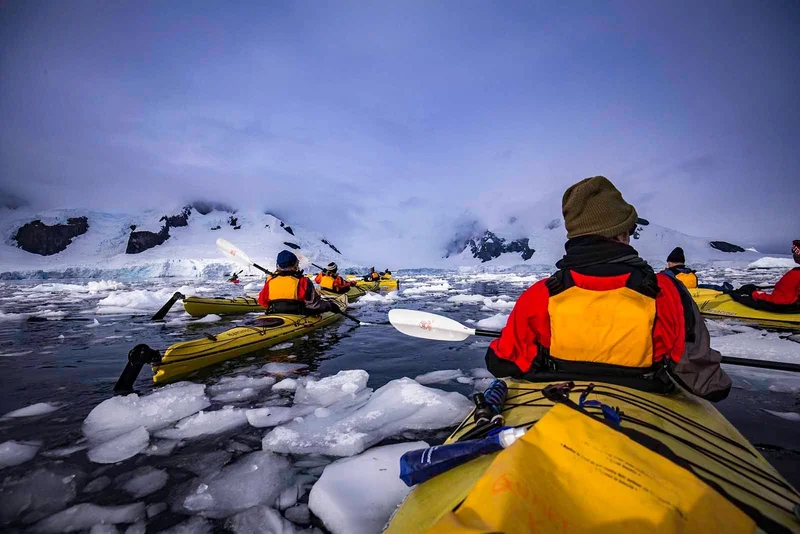
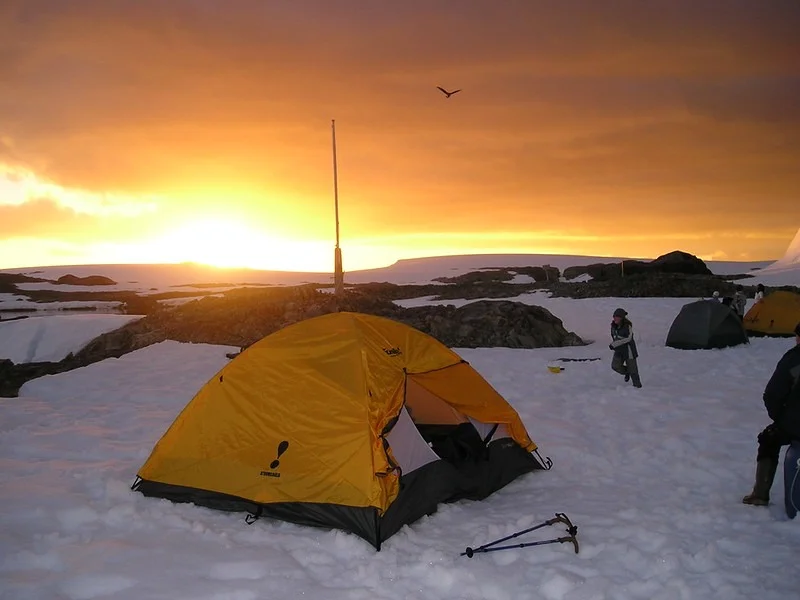
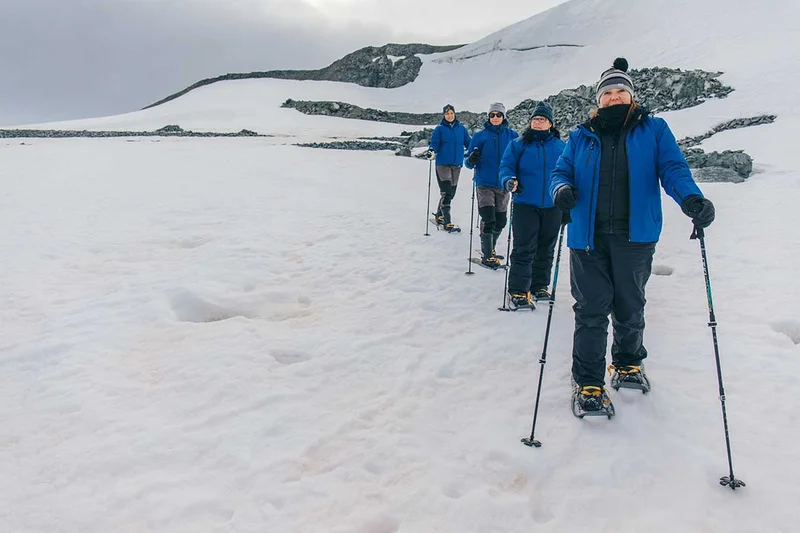
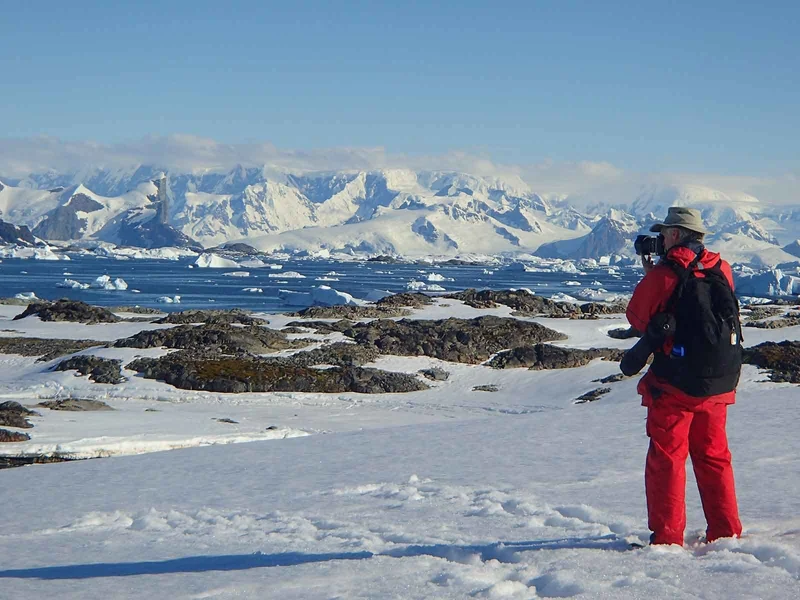
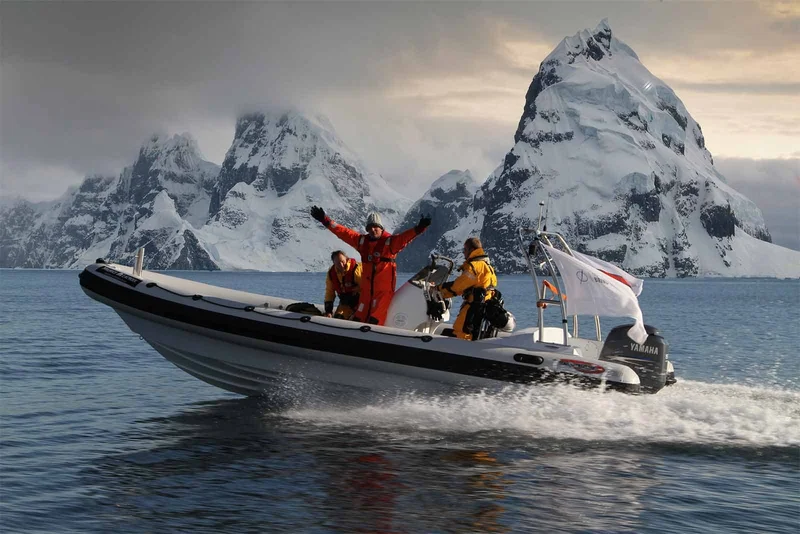

Animals you might see on this itinerary
Why travel with us?
Would you like to know why booking with us is the best choice?
Discover the BenefitsSimilar Itineraries
